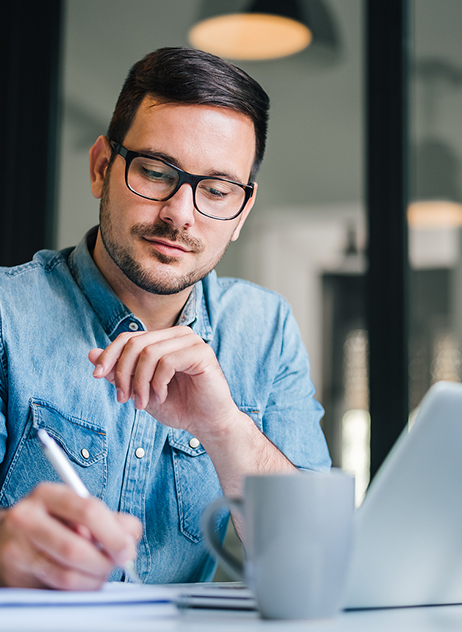Emerging Multifamily Trends in Development and Investment to Keep on Your Watchlist
The industry is experiencing a range of multifamily trends that are set to influence the market. While challenges such as rising construction costs, higher interest rates, and an influx of new supply are present, there are also unique opportunities for multifamily investors, developers, and property managers to navigate this evolving landscape.
Here’s a look at the top 10 multifamily trends shaping the multifamily market in 2025.
1. A Strategic Approach to Market Conditions
With interest rate cuts expected to stimulate the market in late 2025, the focus remains on defensive strategies to manage distressed properties and loans. Many investors are prioritizing short-term bridge financing and creative recapitalization to weather current economic conditions.
Multifamily transaction activity is projected to gradually increase in late 2025 as market stability improves, prompting investors to position themselves for potential growth opportunities.
2. High-Impact Amenity Spaces in Smaller Packages
Developers are optimizing amenity spaces by focusing on quality over quantity. The trend toward “three-season spaces” remains strong, integrating indoor and outdoor elements to maximize usability year-round. Covered patios, glass-enclosed lounges, and hybrid fitness spaces cater to evolving renter expectations without requiring excessive square footage.
Additionally, wellness-focused amenities such as cold plunge pools, infrared saunas, and meditation rooms are gaining popularity, demonstrating that compact spaces can still deliver high-impact experiences.

Multifamily professionals know that the real value in a property lies in offering amenities that appeal to potential renters and align with their evolving expectations and lifestyle needs. Surprisingly, only 15% of multifamily professionals track the usage of their apartment amenities, according to Multifamily Insiders. This gap represents a missed opportunity to tailor offerings that resonate with residents and maximize property value.
Today’s renters are increasingly looking for more than just a place to live — they want a lifestyle that suits their needs and preferences. For example, residents may be willing to commute a bit farther if it means having access to unique amenities like a rooftop lounge, a pet spa, or additional green space. Multifamily professionals have noted that residents are particularly “wowed” by more unconventional offerings such as blow-out hair bars, package lockers, beverage stations, and even crystal lagoons.
3. Location and Amenities as Key Investment Factors
Suburban and garden-style communities remain attractive investments, especially in areas with strong school districts and high barriers to entry. Properties that blend location advantages with desirable amenities continue outperforming competitors, driving long-term resident retention and sustained rent growth.
4. Multifamily Investment Volumes Set to Rebound
Transaction volumes are expected to increase as interest rates stabilize and capital markets become more favorable. Investors should watch for potential pricing corrections in high-supply markets, as well as opportunities to acquire well-located assets below replacement cost.
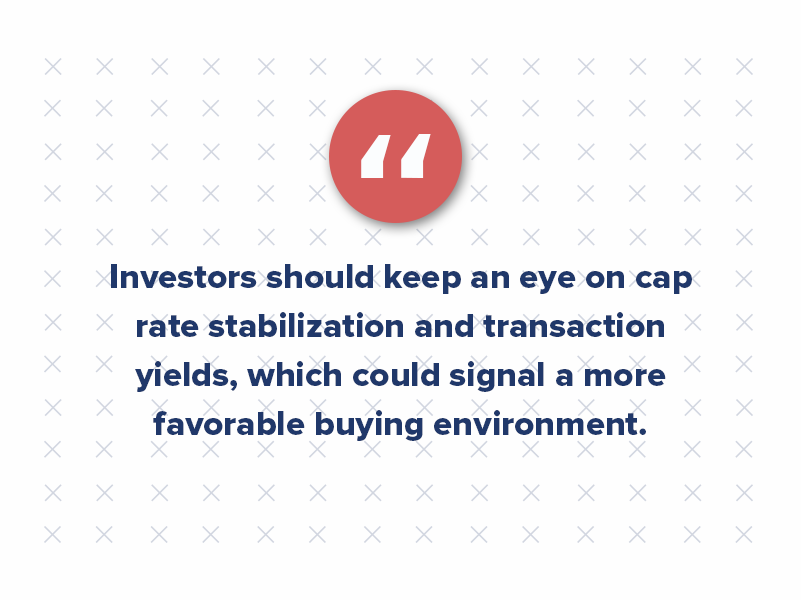
5. Fewer Investors, More Strategic Opportunities
With some traditional investors pulling back, the market is presenting unique opportunities for well-capitalized buyers. Those with access to liquidity and strong lender relationships will have the chance to acquire prime multifamily assets at competitive pricing in late 2025.
6. Oversupply Challenges in Certain Markets
Major markets that experienced a surge in new development over the past few years face oversupply concerns. Lease-up properties offer aggressive concessions, creating challenges for stabilized assets competing for renters. While long-term demand remains strong, the near-term leasing environment may require strategic pricing and marketing adjustments.
7. Aging Demographics Fueling Senior Housing Demand
As the population aged 80+ grows, senior housing is seeing increased investor interest. While new construction has slowed, demand is rising, leading to increased occupancy rates and potential consolidation within the sector.
8. AI and Tech-Driven Risk Mitigation in Insurance
With rising insurance costs, multifamily owners leverage AI-driven smart home technology to mitigate risks like water damage and fires. Properties implementing predictive maintenance solutions and IoT-enabled monitoring systems are seeing lower premiums and improved coverage terms.
9. Hyper-Targeted Marketing and Localized Outreach
Property managers are prioritizing hyper-localized marketing campaigns, leveraging partnerships with local businesses and influencers to boost engagement. Digital advertising platforms are also enabling more precise audience targeting, helping properties maximize their marketing spend.
For example, partnerships with local sports teams or cultural organizations can enhance a property’s visibility and community presence. This approach is particularly effective in markets where traditional marketing efforts may be less impactful.
Discover 10 more ways to market your business in the multifamily market through partnerships, events, sponsorships, and syndications in our blog.

10. RFlexible Workspaces Driving Renovation Strategies
Coworking-friendly apartments are in high demand, with listings featuring work-friendly amenities receiving 16% more saves and 23% more shares daily. Developers are adapting common areas to include quiet workspaces, high-speed internet, and collaborative meeting spaces to cater to the growing remote-work trend.
These renovated areas often include open kitchens, lounge seating, and work-from-home accommodations designed to create a vibrant and flexible environment for residents. By focusing on these renovations, developers can enhance the appeal of their properties and meet the evolving needs of today’s renters.
Adapting to the Future: Strategies for Multifamily Success
While the multifamily market faces economic headwinds, strategic investments and adaptability will be key to success in 2025. Developers and investors who focus on high-demand locations, technology integration, and evolving renter needs will be best positioned to capitalize on emerging opportunities. Staying ahead of these multifamily trends will ensure a competitive edge in a rapidly evolving landscape.
At Criterion.B, we’re here to help you navigate these changes and maximize the opportunities. If you want to refine your marketing strategy or explore new avenues for growth, contact our team today.
The Effectiveness of Predictive Advertising in Multifamily
Predictive advertising has been touted as “the next big thing” in digital marketing — promising marketers smarter targeting, better-qualified leads, and cost-effective ad spend.
Other companies have championed the technology, claiming that predictive analytics can help forecast future renter behavior based on past data, making ad targeting more precise and impactful. But is predictive advertising really the game-changer it claims to be? Does it deliver “said results?”
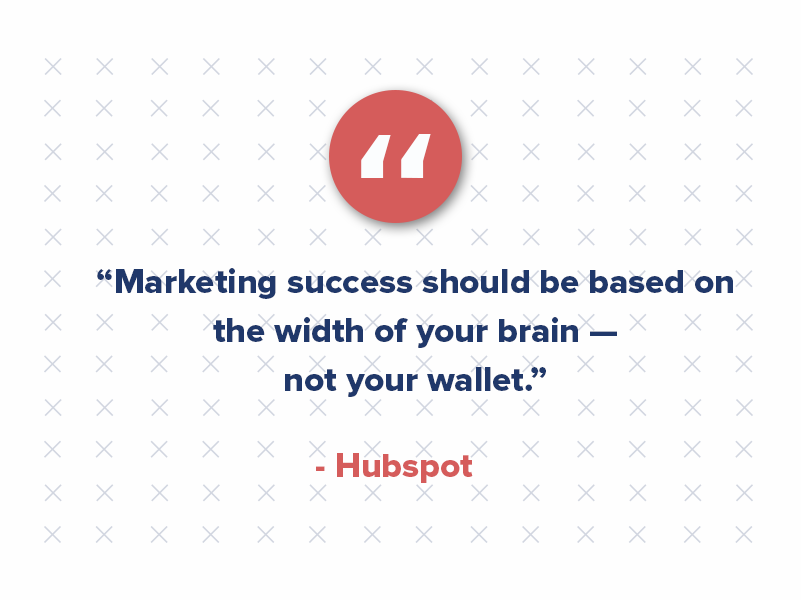
After digging into recent research and analyzing industry results from the last year, the evidence suggests that the effectiveness of predictive ads, especially in multifamily marketing, may not be as clear-cut as proponents would like us to believe.
In fact, we’ve found that more transparent strategies can often deliver better results, which is why we’ve steered away from predictive ad services.
Let’s explore why predictive ads fall short and why Criterion.B takes a more straightforward approach to multifamily marketing.

What Is Predictive Advertising?
If you have spent time working on digital ads, you know the cost has risen significantly in recent years. Meta’s cost per thousand (CPM) has increased 61% yearly, and Google’s programmatic display CPMs increased 75% in the same period, according to The Drum. Meanwhile, many brands are tightening their budgets due to economic uncertainty, yet consumers are expecting better ad targeting, personalization, and overall messaging than ever before.
So how have advertisers and agencies attempted to combat this? Well, they’ve been dabbling in predictive ads (or trying).
“We rushed into [predictive advertising], hoping for big returns but ended up spending too much with little to show for it,” said James Heartquist, owner at Modern Property Solutions. “Our main problem was not using our budget wisely, which led to few sales.”
Predictive analytics uses artificial intelligence (AI) and data from past campaigns to forecast future behaviors. In theory, it allows marketers to target potential renters before they know they’re in the market for an apartment. The idea is simple: by using data like browsing habits, previous searches, demographics, subscriptions, and demographic information, you can predict who is most likely to convert and target your ads accordingly.
Predictive advertising is a subset of predictive analytics that uses historical data, machine learning techniques, and algorithms to target audiences and optimize ad copy and media spending accurately.
In essence, predictive advertising enables brands to build highly targeted audience segments based on millions of behavioral signals and customer attributes. There are several key techniques used in predictive advertising, each offering different levels of sophistication and impact:
- Look-alike modeling: This technique identifies new users who resemble an existing customer group. It’s a simple approach often built into platforms like Facebook and LinkedIn.
- Classification modeling: Similar to look-alike modeling but with an additional layer of filtering, this method excludes users who aren’t ideal targets.
- Click-based optimization: By analyzing user intent, AI predicts the likelihood that a customer will take specific actions, such as clicking on an ad or making a purchase.
- Uplift modeling: This advanced technique predicts how an ad or intervention will affect a customer’s likelihood of purchasing, giving brands even deeper insight into campaign effectiveness.
The Predictive Ads Promise vs. Reality
Companies promote predictive advertising as a way to get more qualified multifamily leads at a lower cost. According to them, this technology helps to refine Google Ads targeting and reach potential renters earlier in their decision-making process.
While this sounds great in theory, industry research shows the results aren’t always as successful as predicted. The goal is to create a more personalized and timely ad experience, but predictive ads can struggle with accuracy as they rely on assumptions about behavior that can be hard to validate. As multifamily experts highlight, the unpredictable nature of renter decision-making makes it difficult for these systems to consistently deliver better conversion rates.
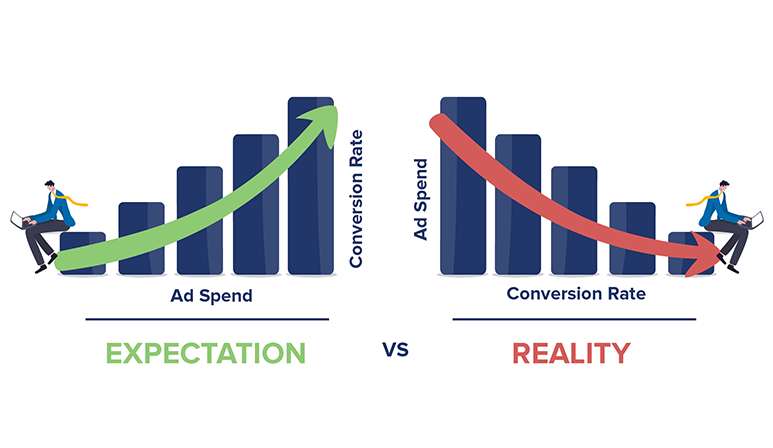
Recent Conversion Logix data showed that while predictive ads could improve click-through rates, the conversion rates (lead-to-lease) weren’t significantly better compared to more straightforward advertising methods.
Predictive Ads Struggle With Accuracy
One of the significant flaws with predictive ads is their reliance on historical data to forecast future behavior. Companies without access to substantial, high-quality data sets may find it challenging to create accurate predictive models.
“A primary challenge for multifamily and real estate marketers in predictive advertising is navigating its complex processes,” said Zach Shepard, principal at Braddock Investment Group Inc. “It involves collecting large amounts of data from multiple sources, analyzing it accurately, and using it to make predictions about potential customers or tenants. This can be a daunting task for those who are not familiar with data analysis and predictive modeling.”
Shepard believes many marketers may lack the necessary tools or resources to implement a successful campaign, which could result in inaccurate predictions or an ineffective strategy that does not yield the desired results.
“In some cases, the negative experience with predictive advertising may stem from unrealistic expectations,” said Shepard. “Marketers may expect immediate and drastic improvements in their marketing efforts without considering the time and effort required to collect and analyze data for accurate predictions.”
Even when sufficient data is available, predictive algorithms often overlook critical variables such as weather changes, shifting moods, or personal relationships — factors that can dramatically influence purchasing decisions in ways that a computer cannot easily anticipate.
“One of the primary issues that marketers face with predictive advertising is inaccurate targeting,” said Robert Fausette, owner of Revival Homebuyer. “Predictive algorithms use data analysis to predict which individuals are most likely to take a certain action, such as clicking on an ad or making a purchase. However, this data is not always accurate and can lead to targeting the wrong audience. This results in wasted advertising budget and lower conversion rates.”
Multifamily Executive reported that renter behavior can be highly volatile, especially in uncertain economic times, making predictive analytics less effective. Renters’ priorities shift based on changing market conditions, economic factors, and personal circumstances that predictive algorithms struggle to account for.
Additionally, predictive models are not static and must be updated continuously to remain relevant. As customer behavior evolves, a model that once worked may quickly become obsolete, leading to inaccurate predictions and wasted ad spend. A perfect example is the 2008 financial crisis, where models predicted mortgage customers would repay loans but failed to account for the collapse in U.S. housing prices.
“Our biggest challenge was getting good leads that actually turn into customers,” said Dino DiNenna, real estate broker at Hilton Head Realty Sales. “We tried a big ad campaign for our fancy apartments, and while lots of people clicked, not many ended up applying. It was frustrating to see all those clicks but so few real leads.”
In multifamily marketing, relying too heavily on outdated models can result in poor targeting, ineffective ad spend, and ultimately, lower ROI. While predictive advertising offers potential, its limitations make it less reliable compared to real-time data-driven approaches that adapt to renters’ immediate needs and behaviors.
In contrast, real-time data like live pricing updates and real-time availability are far more accurate because they reflect the current state of the market. BestEverCRE found that renters are more likely to convert when presented with up-to-date, transparent information such as pricing, unit availability, and immediate offers. This real-time approach provides actionable data, allowing for a more direct path to conversion without relying on speculative forecasts.

The Case for Simplicity: Live Pricing and Availability
One of the most compelling arguments against predictive ads is the simplicity and effectiveness of using real-time data. MultifamilyBiz highlighted that real-time availability and pricing updates directly impact conversion rates because they offer renters the information they need when needed.
By focusing on strategies that prioritize transparency — like showing what units are available right now or offering dynamic pricing — you create a more immediate sense of urgency and trust. Renters are far more likely to act when they know exactly what’s available, at what price, and when they can move in.
Ashley Gawley LRE, founder at Launch Real Estate, advises balancing data with understanding the hyperlocal market, property, and target audience. “For multifamily, look at lease-up rates, turnover, and demand for specific unit types — not just broad demographics,” Gawley said. “Consider hosting focus groups to gain qualitative insights into what’s really driving people’s housing decisions.”
Michael Yerardi, owner of Turning Point Home Buyers also faced challenges with predictive ads when the qds were not matching up with how residents felt about living at the properties. “We listened to what our residents had to say and made big changes,” Yerardi said. “For example, we promised to fix things within 24 hours, which made people much happier. By focusing on making life better for our residents — not just on flashy ads — we got 20% more people to stay with us.”
At Criterion.B, we’ve seen firsthand that simpler methods can outperform more complex, algorithm-based systems like predictive ads. Instead of trying to guess what renters might want in the future, we focus on delivering relevant, real-time information that speaks directly to their current needs.
The Fallacy of Predictability
Predictive advertising often promises that with enough data, marketers can forecast consumer behavior with precision. However, this is where the fallacy of predictability comes into play.

The desire for predictability can lead brands to rely on data and past performance to the point of stifling creativity and innovation. While predictive tools analyze everything from location to preferences, purchases, and search history, they ultimately fail to account for the messiness of human behavior. They can’t account for the emotional and personal factors influencing renter behavior.
Advertising has never been an exact science, nor should it aim to be. The idea that past consumer actions can reliably predict future behavior is flawed, and companies relying too heavily on predictive analytics will likely experience diminishing returns. Past performance does not predict future results. The repetition of predictable tactics inevitably leads to stagnation.
While data can provide insights, the art of advertising lies in its ability to engage, surprise, and break through the ordinary. It’s not about being predictable but about showing up in unexpected places and finding the human connection that resonates with people on a deeper level. Effective advertising is about understanding human behavior — not just the data sets it generates — and creating campaigns that reflect society’s complex, ever-changing nature.
Brands that rely solely on predictive ads risk becoming part of the ignorable 85% of ads that go unnoticed. By rejecting the predictable and embracing creativity, companies can produce advertising that stands out, breaks norms, and becomes part of the cultural conversation.
“We invested in a campaign aimed at prospective renters based on data analytics, but the audience we reached often didn’t align with our ideal tenant profile,” said Justin Landis, founder of The Justin Landis Group. “Many of the leads we received were unqualified, leading to a low conversion rate and wasted marketing dollars. We also faced challenges with the technology itself. The predictive models sometimes failed to account for local market nuances, resulting in ads that felt generic and disconnected from our community’s needs. This misalignment made the campaign feel less personal, and potential renters often overlooked our offerings.”
“The negative experience was frustrating, as we had high hopes for improving our lead generation,” Landis continued. “To pivot, we shifted our focus from purely data-driven advertising to a more integrated approach that included community engagement and personalized messaging. We began leveraging social media to connect with potential renters directly and gather feedback.” This approach enhanced the brand image of The Justin Landis Group. It allowed the company to tailor its offerings to meet audience needs better, ultimately leading to more successful marketing outcomes.
In the multifamily space, where renters’ needs and expectations evolve quickly, it’s essential to stay agile. Predictive ads, with their focus on past data, can leave marketers blind to new opportunities or shifts in renter behavior. Instead of leaning on predictive analytics, focusing on live data, real-time updates, and human-driven insights will allow brands to remain relevant and adaptable in a constantly changing market.
“We learned the hard way that keeping up with what residents want is crucial,” said Nick Stoddard, CEO at KC Property Connection. “We once ran ads aimed at young professionals, but it flopped because we didn’t consider families looking for bigger homes. After tweaking our approach to include families, we saw a big jump in leads and a 15% increase in occupancy rates. This experience taught us that regularly updating our marketing strategies is key to staying on top of changing resident needs.”
The Human Element: Why Predictive Ads Miss the Mark
While artificial intelligence (AI) is growing in digital marketing, its use in long-form content and predictive advertising isn’t without challenges. AI tools used in predictive analytics often simplify complex behaviors into data points, missing out on the nuances of human decision-making.

AI-driven predictive ads are not always effective in capturing the attention of renters seeking personalized experiences. Renters prefer authentic and relevant brands, which AI-driven, predictive models often struggle to achieve. Psychology Today reported that 70% of consumers spend more with authentic brands.
“The overreliance on AI in predictive advertising presents a challenge for us,” said Ryan Whitcher, founder and CEO of Harmony Home Buyers. “We initially embraced AI for our ad campaigns but soon realized it led to biased targeting and a 30% drop in qualified leads over three months. To address this, we implemented a hybrid approach, combining AI with human oversight, resulting in a 25% increase in qualified leads within two months and teaching us the importance of balancing technology with human expertise in our marketing strategies.”
Although 77% of advertisers have a favorable opinion of AI, consumer sentiment tells a different story. A 2024 report from the Edelman Trust Institute revealed that trust in AI among U.S. consumers has dropped by 15% over the past five years, declining from 50% to just 35%.
Also, a recent Neil Patel study found that content marketing incorporating personalization and emotional engagement outperforms data-driven, predictive ad strategies by 94.12%. Renters want to feel connected to the brand they’re considering, and predictive ads often fail to create that connection.
At Criterion.B, we prioritize building trust and emotional engagement through tailored content, real-time updates, and personal interactions. This approach builds lasting relationships, which is something predictive ads can’t do.
Why We Don’t Offer Predictive Ads
At Criterion.B, we’ve done our research. While predictive advertising may have its place in certain industries, the multifamily market demands a more dynamic, real-time approach. The unpredictable nature of renter behavior — combined with the increasing need for transparency and trust — means that predictive ads often fall short.
Rather than relying on speculative technology, we focus on proven methods: real-time pricing, availability updates, tailored content, and building genuine connections with renters. This approach doesn’t just drive traffic — it builds relationships. So while the allure of predictive ads is tempting, we’re committed to more personable (and reliable) strategies.

Proven Marketing Strategies From Industry Leaders You Can Start Using Today
Marketing can sometimes feel like a game of trial and error, but a few tactics consistently hit the mark.
We’ve chatted with 16 industry pros who’ve nailed down the strategies that work, from the power of cause marketing to the smart use of content repurposing.
Here’s a look at the marketing tactics these experts can’t live without — and why they’re so effective.

1. Champion Cause Marketing
One marketing strategy example that has shown immense success is cause marketing. Patrick Beltran, Marketing Director at Ardoz Digital, explains that this approach involves partnering with nonprofit organizations and charities to support meaningful causes. By aligning your multifamily brand with a cause, you add a human element to your marketing efforts, significantly boosting consumer perception and engagement.
“Consumers genuinely feel good about their purchases when they know their money is helping provide essentials like shelter, food, or other support to those in need,” says Beltran. The key to success with cause marketing is choosing a cause you are passionate about, as this authenticity drives better results for your campaigns.
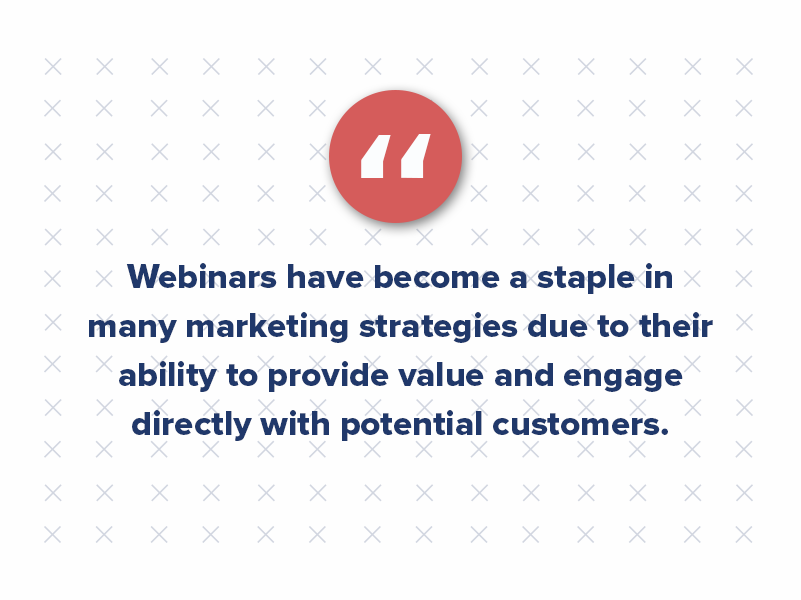
2. Host Value-Packed Webinars
Webinars have become a staple in many marketing strategies due to their ability to provide value and engage directly with potential customers. Rohit Vedantwar, Co-founder and Director at Supramind.com, highlights the effectiveness of this tactic by sharing how his team’s webinars led to a 45% increase in qualified leads and a 30% rise in product trials within six weeks.
“Webinars position our brand as a thought leader while fostering a sense of trust and authority with our audience,” says Vedantwar. By offering actionable insights and detailed product demos, webinars attract participants and drive conversions by addressing the specific needs of your audience.
3. Segment Newsletters by Interest
Personalization in marketing is crucial, and one way to achieve this is by segmenting newsletters based on subscriber interests. Meaghan Maybee, Marketing Communications Specialist at pc/nametag, shares how her team’s segmented newsletters have led to higher open rates, click-through rates, and lower unsubscribe rates.
“Our marketing team creates multiple newsletter types according to a subscriber’s unique interests,” says Maybee. This approach ensures that the content delivered is relevant to where the subscriber is in their buyer’s journey, making them more likely to engage with the emails and ultimately convert.
4. Nurture Leads with Email Campaigns
Email marketing remains one of the most effective ways to nurture leads and build relationships with potential customers. Randy Speckman, CEO at Randy Speckman Design, swears by nurturing email campaigns, sharing how a seven-email drip campaign for an online course launch significantly increased sales on launch day.
“Email nurturing works because it builds familiarity and trust over time,” says Speckman. The key to success with email marketing campaigns is providing real value in each message, which helps establish your brand as an authority in your field and encourages recipients to take action when the time is right.
5. Present at Industry Events
Industry events offer a unique opportunity to showcase your expertise and connect with potential clients face-to-face. Nicole Farber, CEO of ENX2 Legal Marketing, shares how presenting at law schools and marketing conferences has led to multiple new clients and substantial new business.
“Presenting in front of audiences allows me to showcase my knowledge and expertise,” says Farber. By establishing yourself as a thought leader and providing valuable insights, you can generate leads and build credibility in your industry.
6. Create In-Depth Content Guides
Content marketing is a powerful tool for establishing your brand’s authority and driving qualified leads. Josh Cremer, CEO and Creative Director at Redfox Visual, shares how an in-depth guide on local SEO best practices significantly increased qualified leads for his agency.
“Content works because it establishes your expertise, builds trust, and provides value to readers,” says Cremer. In-depth content guides address key concerns and questions that your audience may have, positioning your brand as a go-to resource in your industry.
7. Optimize Paid Social Media Ads
Paid social media advertising allows you to reach your target audience with precision and scale your marketing efforts. Jeff McGeary, Founder & CEO, PracticeVIP LLC, shares how paid social media ads have driven substantial new revenue for his clients.
“For small practices especially, paid social advertising is a game-changer,” says McGeary. By targeting your ideal customers and crafting relatable messaging, you can generate high-quality leads and achieve a significant return on investment.
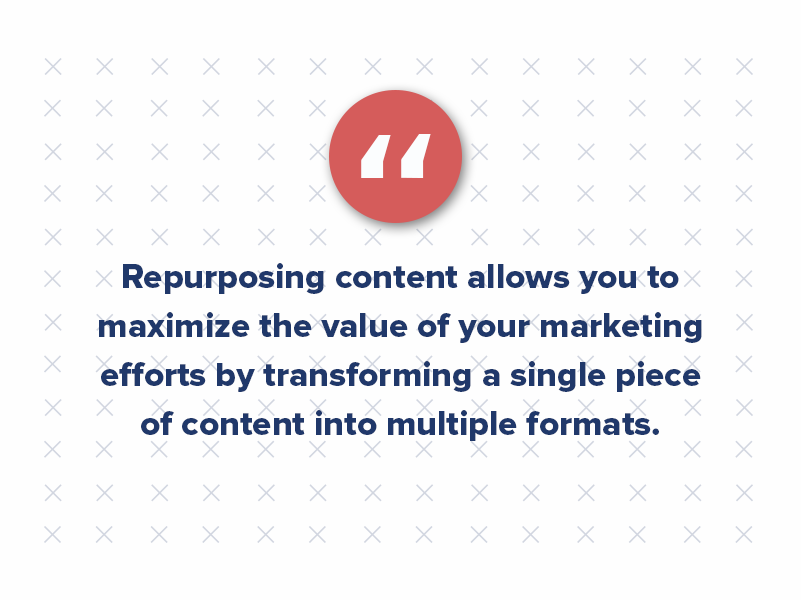
8. Maximize Reach with Content Repurposing
Repurposing content allows you to maximize the value of your marketing efforts by transforming a single piece of content into multiple formats. Vaibhav Kakkar, CEO of Digital Web Solutions, highlights how his team’s content repurposing strategy led to increased reach and engagement.
“We maximize the value of our content by transforming a single piece into multiple formats,” says Kakkar. This approach ensures that your core message reaches different audience segments, making your marketing strategies more efficient and impactful.
9. Personalize Your Email Marketing Campaigns
Personalization is key to effective email campaigns. Lauren Gast, Marketing Director at Truck Driver Institute, shares how personalized email campaigns have increased inquiries for their CDL training programs.
“It works because it creates a one-to-one and relevant relationship with the audience,” says Gast. By addressing the specific needs and interests of your audience, personalized emails can significantly boost engagement and conversion rates.
10. Showcase Customer Testimonials
Customer testimonials and case studies are powerful tools for building trust and credibility with potential clients. Tim Woda, Founder at White Peak, shares how leveraging customer testimonials led to an increase in leads and inquiries.
“Real-life success stories resonate with prospects far more than generic marketing messages,” says Woda. By showcasing the tangible benefits of your services through customer testimonials, you can convert leads into customers more effectively.
11. Produce Engaging Explainer Videos
Visual content, especially videos, is a highly effective way to communicate complex messages quickly and engagingly. Kevin Watts, President and Founder at Raincross, shares how an explainer video increased qualified leads by over 30% within the first month.
“Videos work because they can convey a complex message in a short, easy-to-understand format,” says Watts. Engaging visual content can capture the attention of your audience and drive them to take action.
12. Leverage Strategic Partnerships
Strategic partnerships allow you to tap into an established network and community, providing access to high-quality leads. Robert P. Dickey, President and CEO at AQ Marketing, shares how strategic partnerships have driven significant lead generation for his clients.
“Strategic partnerships work because you’re leveraging an established network and community that already trusts your partner,” says Dickey. By creating mutually beneficial partnerships, you can gain exposure to new audiences and drive organic growth.
13. Utilize User-Generated Content
User-generated content (UGC) adds authenticity to your marketing tactics by showcasing real customer experiences. Kam Talebi, CEO of Gigli, shares how utilizing UGC has improved their ROI and strengthened connections with customers.
“UGC is more effective than brand-generated content because it showcases the experiences that other people are having with our products,” says Talebi. Incorporating UGC into your marketing strategy can build trust and engagement with your audience.
14. Organize Industry-Specific Events
Industry-specific events directly engage your target market, making them a highly effective marketing tactic. Amar Ghose, CEO of ZenMaid, shares how organizing the “Maid Summit” significantly boosted brand awareness and generated high-quality leads.
“By bringing people together and providing valuable content, we not only increased our brand visibility but also maintained a steady flow of leads,” says Ghose. Organizing events allows you to connect with your audience on a personal level and establish your brand as a leader in your industry.
15. Tailor Marketing to Generational Segments
Understanding the unique preferences of different generational segments is crucial for crafting personalized marketing strategies. Farnam Elyasof, Founder of Flex Suits, shares how tailoring campaigns to Millennials and Gen X has optimized engagement and boosted leads.
“Being aware of generational nuances ensures that you are using the right marketing strategies to boost your leads and revenue,” says Elyasof. By addressing the specific needs and preferences of each generation, you can create more effective and relevant campaigns.
16. Offer Referral Incentives
Referral incentives are a cost-effective way to amplify word-of-mouth marketing and drive organic growth. John Cammidge, Handyman at Handyman John, shares how offering a 10% discount for referrals significantly boosted revenue and client loyalty.
“Referral incentives leverage trust — clients trust their friends’ recommendations,” says Cammidge. By rewarding existing clients for referring new customers, you can create a cycle of consistent growth and client retention.
Championing Success Through Strategic Marketing Tactics
These marketing tactics, championed by industry thought leaders, demonstrate the power of strategic, personalized, and value-driven approaches. Whether through cause marketing, personalized email campaigns, or organizing industry events, these marketing strategy examples have proven their effectiveness in driving results across various sectors. With these marketing tactics, you can enhance engagement, build trust, and achieve long-term success for your organization.

Must-Have Marketing Tools for Building Your Online Empire
The marketing technology landscape (MarTech) can feel overwhelming. With countless tools vying for your attention, it’s easy to get lost in the “nice-to-haves” and miss the essentials for building a strong online presence and fostering meaningful engagement.
Below, we explore key tools to enhance brand awareness, audience interaction, and online visibility.
Remember, a well-defined marketing strategy is the foundation for success. These tools will amplify your efforts, not replace them.

Before diving in, consider your resources. Partnering with a multifamily marketing agency grants access to their MarTech stack, which often includes email marketing, SEO, social media management tools, and more. Utilize their expertise and potentially save on individual tool subscriptions.
1. Content Management System (CMS
Gone are the days of developer-dependent websites. User-friendly CMS platforms like WordPress empower you to add content, edit, and manage your website easily, even without coding knowledge. This translates to cost savings and frees you from relying on IT for basic updates.
But a website is more than just a digital brochure. Regularly publishing valuable content establishes your brand as an industry authority, attracts organic search engine traffic, and subtly pre-qualifies genuinely interested visitors. WordPress offers a vast library of plugins for seamless integration with other MarTech tools like Mailchimp (email marketing tools), WooCommerce (e-commerce), and Google Analytics (web analytics).
2. Unveiling Audience Insights With Google Analytics
Google Analytics, a free web analytics platform, illuminates the who, what, and why behind your website traffic. It reveals which marketing channels drive lead generation, their behavior on your site, and their actions (e.g., page views and downloads). Take your analysis further by setting up custom events and goals to track specific user actions like content downloads, form submissions, or video views. This data empowers you to tailor your content and marketing strategies for maximum impact and return on investment.

3. Social Media Management Tools
Platforms like Hootsuite or Buffer streamline social media scheduling, allowing you to manage multiple accounts and ad campaigns and post consistently across various platforms. This keeps your brand buzzing and fosters audience interaction.
Tools like Brandwatch or Sprout Social can also help you monitor online conversations about your brand and industry trends. This allows you to identify areas for improvement, address customer concerns, and participate in relevant conversations.
Remember, the ideal MarTech stack is a blend of tools that empower your unique marketing efforts.
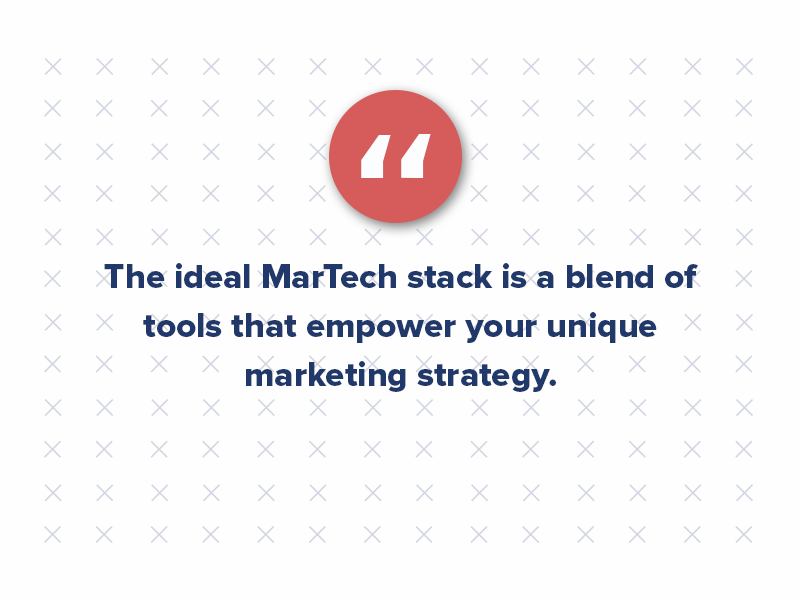
4. Graphic Design Tools
Eye-catching visuals are essential for grabbing attention and boosting engagement. Design tools like Adobe Creative Suite (powerful but complex), ProCreate (ideal for artists on iPads), or Canva (user-friendly and budget-conscious) empower you to create professional-looking social media graphics, infographics, and other visual content.
5. Search Engine Optimization (SEO)
Technical SEO ensures your website adheres to search engine guidelines, making it easily discoverable by potential customers. Tools like Semrush, SEO Moz, and Ahrefs offer website audits, keyword research, and competitor analysis, helping you optimize your site for relevant search terms. By improving your search ranking, you organically attract a wider audience interested in what you offer.
6. Nurturing Relationships With Email Marketing Tools
Building lasting connections with your audience is key to brand loyalty. Email marketing tools let you share valuable content, announce promotions, and keep your brand top-of-mind. While standalone tools like Mailchimp exist, marketing automation platforms like Go High Level, SharpSpring, and HubSpot often include built-in email marketing functionalities. These tools allow for automated email sequences and email campaigns that nurture and keep multifamily leads engaged over time.

7. Webinars and Online Events
Platforms like Zoom or GoToWebinar allow you to host live events, product demos, or industry discussions. This is a fantastic way to connect with your audience in real time and showcase your expertise.
8. Marketing Automation Software
Marketing automation software takes your MarTech toolbox to the next level. These tools automate repetitive tasks, allowing you to focus on high-level strategy, marketing campaigns, and nurturing relationships.
Here’s how they can benefit your business:
- Automated Workflows: Create pre-defined sequences for nurturing leads, sending personalized messages based on user behavior, and automating follow-up emails. This frees up your time for more strategic initiatives.
- Lead Scoring and Segmentation: Assign scores to leads based on their engagement level and website activity. This helps prioritize leads and personalize communication for maximum impact.
- Omnichannel Marketing: Deliver targeted messages across multiple channels, including email, social media, and SMS, for more cohesive brand and customer experiences.
When selecting marketing automation software, a property manager should budget, team size, and marketing goals for the property. Look for features that align with your needs and offer scalability as the property grows.
Propel Your Business Forward With MarTech
The MarTech landscape is vast, and the “best” tools depend on your needs and budget. Start by focusing on a core set of tools that align with your strategy and gradually expand your multifamily marketing channels as your online presence evolves. Leveraging these resources allows you to establish a strong online brand, cultivate a loyal audience, and propel your business forward.

The True Value of a Qualified Lead in Multifamily Marketing
For commercial real estate marketing professionals, adapting to the rapid shift toward digital methods is both challenging and essential. Traditional property marketing techniques, honed over decades, are familiar to many. Yet, the evolution of the commercial real estate market trends points unmistakably toward the burgeoning significance of online platforms and digital outreach.
Navigating this digital realm can often feel like venturing into uncharted territory. While old marketing methods are quickly embraced due to years of experience, commercial real estate digital marketing strategies often face skepticism. These modern strategies’ tangible benefits and efficiencies, such as lower implementation costs, are frequently overshadowed by doubts and resistance. This evolving scenario poses a unique problem for multifamily marketing managers attempting to position themselves at the forefront of real estate marketing strategy innovation.
So, how can one effectively convey the value of a lead, especially a qualified apartment lead, within this digital framework? The challenge might seem daunting, but understanding and leveraging the potential of digital tools is crucial for marketers determined to stay ahead in the game.
The Quantitative: Doing the Math
When navigating the intricacies of multifamily marketing, one of the foremost concerns that real estate agents and marketers face is justifying the costs to their executive team. While these teams frequently zoom in on ROI as the primary measure of success, a holistic view of marketing efforts suggests this isn’t the only metric that matters.
Why? Understanding the ROI in the world of real estate marketing requires a deep dive into the needs and behaviors of the target audience. Further complicating matters, there are numerous ways to calculate marketing ROI, each offering unique insights tailored to different real estate marketing ideas.
For those deeply entrenched in commercial real estate marketing, the prevalent method to gauge ROI is the “cost per lead.” But here’s where many face a problem: Does this metric encompass all leads, or does it specifically address qualified leads? If you’re using a real estate website to generate leads, search engines can often bring a mix of visitors, not all of whom are part of your target market. When examining the broad spectrum of all leads, the cost-per-unqualified lead will invariably seem more economical.
However, a closer look reveals the nuances. Many of these leads, especially those seeking properties like office space or virtual tours of property listings, might not align with what’s being offered, making them a less-than-ideal fit or not ready to purchase.
This initial cost, often deceivingly attractive, fails to factor in the lead’s position in the buyer’s journey, whether they’re just becoming aware or on the brink of making a decision. Consequently, this metric overlooks essential expenses, such as the costs of nurturing these leads through tailored marketing strategies or the eventual sales pitch.
Cost Per Lead
However, the standard “cost-per-lead” is likely a sufficient metric for companies playing the lead generation game. That formula is simple enough. You take the marketing spend and then divide it by the number of leads.
Marketing Spend / Total New Leads = Cost Per Lead (CPL)
But depending on your end goals, this may not be the number your executive team wants. They may be more interested in your cost per marketing qualified lead (MQL) — or a lead ready to go to sales. This number is not too complicated, either.
Divide the marketing tactic spend by the number of MQLs you got through that method. That’s your MQL cost. Not tracking MQLs? You will not be able to backtrack your MQLs, but we have some tips on setting up your lead qualification for the future.
Marketing Tactic Spend / Total New MQLs = Cost Per MQL
This metric will likely garner better interest than a standard cost per lead, but executives will likely want more. This is where “return on spend” comes in, which shows the actual value of your efforts by relaying how those efforts impacted your bottom line. In other words, it’s the amount you earn in the business compared to your spend. This number is much harder to get; however, it can be a significant selling point in convincing your boss of the value of your efforts.
First, you must know the lifetime value of your customers.
Lifetime Value
Calculating the lifetime value of your customer is simple enough, but your formula will vary based on the nature of your product or service. If you are a subscription-based service, you will want to know the average monthly spend of a customer. If you offer a one-time product or service, you must consider typical upsells, which can increase your averages. There’s no simple formula, but once you go through this process with your sales data, you should be able to come up with a reasonable average.
The next step is to look at conversion rates of qualified leads — namely, how many marketing-qualified leads become sales-qualified leads and the average close rate of a sales-qualified lead. Got that number? You are going to use it to calculate the MQL value.
MQL Value
The MQL value is vital because it benchmarks how much an MQL should be worth. It’s also key in calculating return on spend. With this number and your cost per MQL, you can calculate the return on any marketing spend — email campaign, social media ad, etc. It’s as simple as dividing the MQL value by the cost per MQL
MQL Value / Cost Per MQL = Return on Spend
This number can help commercial real estate marketers justify marketing endeavors. However, it’s not the only one you should look at. A better snapshot number could be “return on campaign,” which looks at your endeavors. Much like a standard ROI number, return on campaign operates on similar calculations, but while looking at the components of your marketing campaign over the set time it ran.
Traditional ROI computations look like this:
(Sales Growth – Marketing Cost) / Marketing Cost = Return on Investment
However, with campaigns in mind, there are often different or additional costs involved, and not all sales may result from the campaign. If you run a single campaign at a time, you could modify this calculation to reflect any natural growth you see on average.
(Sales Growth – Marketing Cost) / Marketing Cost – Avg. Organic Growth = Return on Campaign
This gives you a more standard return that executives are used to interacting with. However, if you run multiple campaigns simultaneously, you can calculate individual returns on each campaign by taking a more roundabout approach. This involves looking at customers acquired from the campaign and multiplying the average sales and margin. Then, you subtract your campaign budget. This gives a more accurate number as to the contributory effect of each campaign.
(# Campaign Customers * Avg. Sale Amt. * Avg. Margin) – Campaign Budget = Return on Campaign
These numbers may not be simple to master or even remember; however, they’re a great way of proving marketing’s worth to your executive team.
The Qualitative: Remembering the Immeasurable
People like numbers because they are easily digestible. A number tells a simple story. But a number can also be manipulated. And a number doesn’t always tell the full story. Often, having numbers is not enough — you also need a narrative. This is where “qualitative” value comes in.
A great return on spend will undoubtedly do well to impress your C-suite with your marketing efforts. But what if you told them you also could decrease your sales cycle by a few months? That would garner strong attention as well. This is just one example of qualitative value when discussing your marketing endeavors — and the unexpected benefits of running a solid digital marketing campaign.
Digital Marketing Is Iterative
Another positive qualitative value? Certain parts of a digital marketing strategy are iterative. Commercial real estate marketers may need to develop new content or web pages for campaigns, but much of the groundwork is already done. And most of it will not need to be done again. Or at least not soon.
Buyer personas and the associated buyer’s journey may need adjustments over time. However, none of that will compare to the initial costs of developing these items. This means that over time, your ROI will likely decrease, as the costs of these components can technically be spread across each campaign. It’s hard to calculate this as a number, but it certainly goes into ascribing value to the lead process.
Qualified Leads for Commercial Real Estate Marketers
The biggest qualitative value that inbound offers is qualified leads. Traditional marketing methods gather unqualified leads sent to sales — or worse, cold-calling. On the other hand, inbound marketing puts a process in place that qualifies leads naturally through offers and nurture campaigns.
This systematically improves the marketing process, allowing leads to qualify themselves as you push out more content. In turn, you shorten the time and resources the sales team spends qualifying leads. This means commercial real estate marketers’ qualified leads from the inbound process cost less than the qualified leads you get through another method.
The Bottom Line of Lead Value
So, what does this mean for commercial real estate marketers?
Pulling it all together, a digital marketing program like multifamily inbound marketing allows you to ascribe worth to the apartment leads you gather easily. Multifamily inbound marketing also enables you to prove that the costs and returns associated with those leads are of greater value to your business than leads garnered from more traditional methods.
In coupling calculations like return on spend, you can prove your leads’ quantitative and qualitative value. As we noted previously, inbound marketing offers improved cost-per-lead values and lower implementation costs. But it’s one thing to know it and another thing to prove it to your executive team.
How to Support Consistent Growth for Your Multifamily Business
The multifamily market has seen a paradigm shift with the rise of inbound marketing. A comprehensive perspective is vital as you construct your marketing funnel, from crafting insightful blog posts to launching targeted Facebook ads.
New marketers eager to build captivating campaigns and hone their content marketing efforts might sometimes overlook crucial elements like the leasing agent’s strategic role and the nuances of the target audience.
Without a dynamic strategy for enticing potential customers, even the most detailed funnel risks stagnation. Ensuring that every facet of your marketing efforts works harmoniously is essential for generating loyal customers.
Focusing on the Funnel
A successful marketing idea hinges on mastering the inbound marketing funnel. For those who are new to this approach, it’s common to launch numerous campaigns with a keen focus on the buyer’s journey at every stage.
However, the true secret lies in optimizing strategies for prospective customers. Emphasizing search engine optimization (SEO) ensures your business consistently appears atop search results, making it more visible to potential customers.
Campaigns certainly have their place, but the key to long-term success is concentrating efforts at the funnel’s top. This is where initial interest from potential customers is captured.
Without this interest, there’s no pool of leads to nurture or engage with. Excellent customer service and content tailored specifically for your target audience is essential. With this approach, you can guarantee a steady flow of visitors and create opportunities to convert them into long-term customers or clients.
Making Your Multifamily Marketing Funnel Scalable
The key to any business growth is scalability. But how do you translate a marketing funnel to meet scalability needs?
The first requirement is to look solely at the numbers. If you are struggling to bring in 1,500 web visitors per month and are only converting that traffic to leads at a rate of 3%, the outlook for company growth is not promising.
When faced with this kind of issue, it is essential to change your funnel, albeit one at a time. Again, your concern should be primarily on your traffic generation or how to increase that visitation from 1,500. If nothing else, an increase in site traffic to around 5,000 monthly with a steady lead rate of 3% can still significantly impact your top-of-funnel multifamily leads from 45 to 150 a month.
But how do you increase this traffic to such a rate? Again, your focus should be content. Experimenting with your content tilt, improving your content amount, and changing how you promote your content can contribute to higher traffic.
Maintain Consistent Conversion Rates
Achieving a scalable marketing funnel hinges on the stability of conversion rates, a crucial metric for multifamily marketing professionals. The effectiveness of your efforts, particularly in areas like landing pages, forms, and special offers, plays a significant role in driving these conversion rates.
For instance, if you’ve historically experienced a 5% conversion rate from visitors to leads and a subsequent 1% from leads to actual customers, it’s paramount that these figures remain steady or, even better, show improvement to ensure the potential for long-term growth.
Consistent conversion rates don’t just offer a static picture; they enable forward-thinking marketers to predict the number of potential customers or clients that may enter the lead generation pool within a given timeframe. Moreover, closely monitoring these rates allows you to gauge the number of leads likely to transition further down the sales funnel.
The integration of well-maintained buyer’s journey content, coupled with feedback from your sales team and tactics such as multifamily SEO, ensures that your content resonates with the target audience and that you are on track to meeting the overarching objectives of your marketing campaign.
Keeping Up With the Content
For businesses seeing inbound success, it is tempting to lapse in your efforts or change direction due to comfortable growth. However, this can be incredibly damaging to your business. Your content needs to be consistent.
Again, we return to the issue of scalability. Knowing that content is the basis of bringing in multifamily traffic, it’s important to maintain that generation to maintain results. But how do you do that without your content growing stale? It’s a matter of knowing your audience so that you can take a leading approach in content creation.
Ideally, as you grow, it should be simple for your business to put processes in place to become a content machine. Keeping up with your content ensures your business can continue to grow easily.
Leveraging Technology for Insightful Thought Leadership
Multifamily businesses can’t afford to lag. Integrating technology and data analytics into your marketing approach can offer significant advantages.
1. Harnessing CRM Systems
Customer Relationship Management (CRM) tools are no longer a luxury but a necessity. These platforms give you a holistic view of each prospective customer, tracing their journey from mere visitors to committed customers or clients. Analyzing this data lets you pinpoint where potential customers or clients might drop off, allowing for timely interventions and targeted strategies.
2. Data-Driven Decision Making
Relying on gut feelings is a strategy of the past. Today, successful multifamily marketers bank on actionable insights derived from data analytics. By studying patterns, behaviors, and preferences of potential customers, marketing strategies can be fine-tuned to match the exact needs and desires of the target audience. This ensures higher conversion rates and, ultimately, more signed leases.
3. Automated Marketing Campaigns
Automation in marketing can be a game-changer. Imagine tailoring specific email campaigns for different segments of your audience, triggered by particular actions they take. This ensures that the content is relevant to the recipient and reaches them opportunely, increasing the chances of conversion.
4. Continuous Learning and Adaptation
The digital landscape is ever-evolving. What works today might not be as effective tomorrow. Therefore, continuous learning and staying updated with the latest marketing trends, technological tools, and best practices are crucial. Regular training sessions, workshops, and webinars can help multifamily marketers stay ahead of the curve.
While content marketing fundamentals remain rooted in understanding and catering to the buyer’s journey, the tools and technologies available to us have greatly expanded. These tools can help you maintain traffic and ensure sustained growth and expansion in an increasingly competitive market.
It’s Time to Take Digital Multifamily Marketing Seriously
Most digital marketers can probably relate to this social situation: Someone asks what you do for a living. After explaining that you work in multifamily digital marketing, the inquisitor follows up with some variation: “So, you play around on Facebook all day?”

Social media for multifamily vendors and developments, in particular, gets a bad reputation, with some business owners refusing even to acknowledge social platforms as legitimate marketing channels.
But if you think digital marketing is just fluff and noise, you are missing out on low-cost campaigns with great returns on investment that traditional marketing cannot compete with. Most businesses fail to realize that digital marketing offers more measurable value than traditional methods.
How a Company Generated $2M From One Blog
Over the years, blogging has transformed from a forum for teenagers into an affordable multifamily lead generation tool. To understand how this transformation occurred, let’s first examine how the internet has changed consumer behavior.

With a digital information repository at your fingertips, today’s consumers are more educated than ever. Gone are the days of visiting a store to speak to an expert or asking neighbors for referrals. Everything from pricing to reviews is found with a simple search.
No matter what industry or consumers you serve, customers have questions, and you can guess where they go for their answers — Google. So, how can you take advantage of this? By answering those questions on your company’s blog or FAQ page.
Marcus Sheridan, one of the earliest content marketing proponents, generated $2 million for River Pool & Spas when he published a blog post on the company’s website answering a simple question: “How much does a fiberglass pool cost?”
What did the blog post cost him? A half-hour of his time and maybe some web analytics tools? We’ll take that ROI.
According to Tech Client, businesses have a 434% higher chance of a high ranking on search engines if they feature blogs as part of their website. Additionally, HubSpot found that companies that implement blogging into their content marketing strategy receive 67% more leads than those that do not.
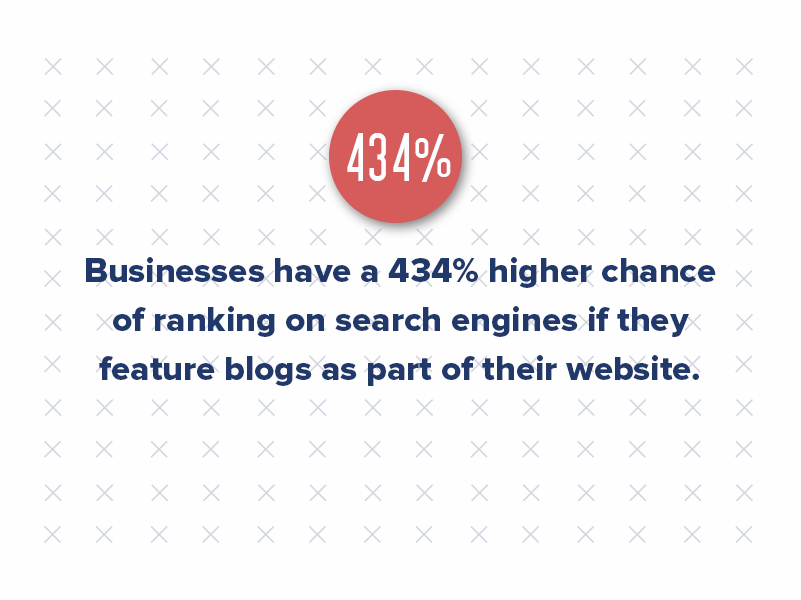
Content marketing might seem pretty straightforward, but like any marketing campaign, it is important to have a strategy. For most businesses, you are not blogging just to blog; you create content to drive your marketing funnel.
Social Media’s Biggest Value-Add for Business
Multifamily owners often ask, “Is social media a legitimate way to generate multifamily leads?” But those owners might be asking the wrong question.
The value of social media is not measured in leads, but rather, it is measured through customer experience. According to Forrester data, a relationship exists between customer experience and stock price. People are willing to pay a premium cost for the experience with a brand.
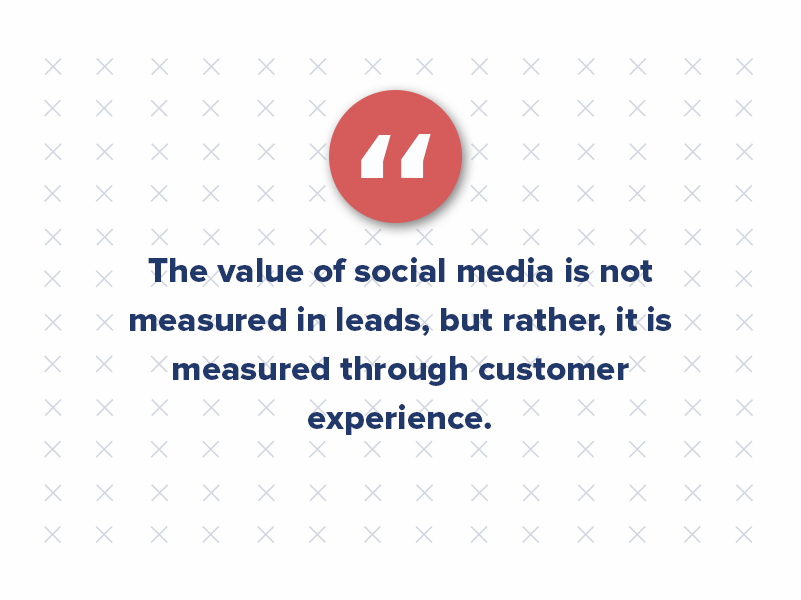
Additionally, improving customer experience can save your company big bucks. In fact, Sprint saves $1.7 billion each year by determining and mitigating the root cause of customer dissatisfaction from calls made to its contact center.
And as it turns out, social media is crucial to improving customer experience. The internet allows word-of-mouth communication to spread easier than ever, both positive and negative.
In the multifamily industry, for example, negative commentary from residents is commonly found across social media and online review sites such as Yelp, Twitter, and Google business pages. Residents who are frustrated with a property’s maintenance issues or poor customer service often express those feelings publicly online. How a multifamily property responds will determine how a negative comment affects your business.
However, each part of your marketing strategy should fit into one cohesive piece. Your website, social media presence, user experience, customer experience, etc., should work harmoniously to establish a successful inbound marketing plan.
You Must Talk Marketing ROI (4 Key Takeaways)
As marketers, we are constantly faced with the battle of justifying ourselves and our multifamily marketing agency’s role in a company’s ROI. We must always find ways to prove to CEOs that marketing contributes to the bottom line.
But how?
Here are 4 ways to convince multifamily owners and CEOS that marketing ROI matters.
1. Be relevant — set SMART goals.
Do you find yourself constantly sharing statistics that discuss retweets, follows, visits to the website, etc.?
These stats are important, but if you have not established true goals and understand how and if your work is contributing to the bottom line, STOP IT! It’s time to set up your SMART goals, communicate with your sales team, and start being relevant to what is most important to the CEO and company: ROI.
2. Play offense, not defense.
Believe it or not, about 69% of CEOs believe that marketing is a waste of time, money, and resources. To stay on the offense, you must clearly define your goals, ensure that sales and marketing are happy, and discuss the purpose behind your goals.

3. Always go after the 3 Hs.
- Head – Explain your plan of action. Defend your strategies with case studies, numbers, etc. Win over your team with proof!
- Heart – If people aren’t truly vested in your idea with their heart, you will lose them. Find out what’s important to them and how to tie your new goals to theirs.
- Hands – Now that you’ve won over your team, you’ve got to get them to get back to (or start) work! Play out those call-to-actions.
4. Prepare to show your medal.
In business, you will fight many battles. You will be criticized and put through the wringer. But, at the end, these obstacles will refine your character — just like a medal has to go through fire to be reshaped and altered.
Take risks and be the change that will keep your organization moving forward.

Creating Marketing Qualified Leads With the Right Form
The excitement of starting an inbound marketing strategy for your organization can lead to initial eagerness to get things rolling. But in that sprint to kick off your multifamily marketing, you might find yourself missing a step or two.

The use of content to gather apartment leads is, without a doubt, the primary focus of inbound. Therefore, many marketers and property managers spend their time emphasizing content strategy to generate those apartment leads.
However, optimizing your content without optimizing your lead strategy defeats the purpose of inbound altogether. Instead, marketers should spend much of their intro to the inbound process on apartment lead generation and business strategies to guarantee their content is meeting objectives.
What is the purpose of an apartment lead generation form?
Nearly every multifamily website these days has an apartment lead generation form. But the effectiveness of those forms depends on many factors, including:
- Type
- Location on the page
- The offer
- The questions
- How the contact data is used
Have you ever been interested in a new apartment complex or shopping center around town? Maybe you had a specific question while they were in development, so you filled out the contact fields — and waited. And waited. But no one got back to you.
Chances are, you provided a decent amount of personal information on that apartment lead generation form. You did so willingly because it was an exchange you found reasonable: your contact details for the offer or answers you wanted. Understanding this exchange is the key.

In short, an apartment lead generation form is a means of gathering information — the level of which is dependent on what you are offering on the other side. In multifamily inbound marketing, forms are also a means of progressive profiling (i.e., qualifying your apartment leads by asking for a little more intel) each time they fill one out. This progressive profiling is meant to get more and more information that qualifies leads by lifecycle stage and determines their point in the buyer’s journey.
What questions should you ask on your apartment lead generation form?
Now that you know the importance of your fields, the next issue becomes, “What questions should I ask?” This is where your apartment lead generation strategy comes in. If you followed the multifamily inbound marketing strategy correctly, your teams all came together to identify your buyer persona. Doing this should have resulted in defining your lead lifecycle stage.
If you have not done this, go back and do it now because this data is vital to your progressive profiling.
Let’s say you are a tenant representative for a large new commercial office building downtown. The project is not complete yet, but it has generated a lot of buzz, and companies are showing interest. You want to be sure you lease up before opening. However, you also need to make sure the companies you bring in are a good fit. This is where progressive profiling comes in.
Your first apartment lead generation form (the awareness one) will always cover introductory information. This includes the basics:
- Name
- Phone
- Company name
- Job title

If you are using certain marketing automation software like HubSpot, you have the opportunity to add smart fields that will populate if you already have this particular information. Smart fields help expedite the lead qualification process by letting you ask for additional relevant information. These fields also make things easier for sales down the line if the lead becomes “sales qualified.”
Developing your questions
Gathering your teams together for your apartment lead generation strategy would be pointless if you don’t have a process by which to direct them. Thankfully, that process is relatively simple. Early in the multifamily inbound marketing process, your team should have come up with an ideal buyer profile and a buyer persona, as well as SMART goals for the year to determine what type of leads you are hoping to attract. Need help building your ideal buyer profile? Check out our other blog here.
At this time, you get to bring all those details together. By using lead and customer goals, persona details, and sales data, your team should be able to determine the necessary lead information to create marketing-qualified leads.

Back to the tenant rep example from above. You know the office building in question has a specific number of spaces with an anticipated rent range. You also know the amenities that the building does and does not have. Given the nature of the building, along with your business goals, you know you will likely need to build a large awareness funnel to meet the occupancy goals by open.
While your awareness questions are simple enough, the details you need in the consideration and decision stage are much more in-depth. For one, the type of business and size is important in determining fit, as the building may not support the needs of certain companies. If the building is high-end, questions around “current rent” or “monthly revenue” may be important to help you discover if the company is a good fit from an affordability standpoint. By gathering this information early on, when it comes time to start leasing, the tenant rep’s job should be fairly simple in picking sales-ready leads that met the requirements.
Segmenting your list
While the ultimate benefit of progressive profiling is to shorten the sales cycle, there’s a secondary benefit that can help. List segmentation is the act of separating contacts in your CRM by various criteria. If you run a multifaceted business with a lot of different verticals, list segmentation is a lifesaver.
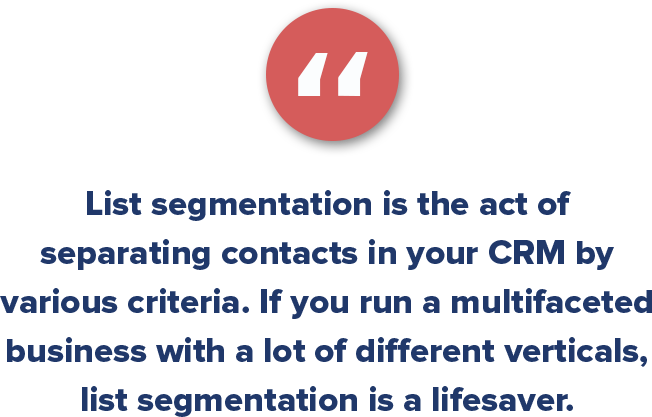
If you have a new offer for clients in the senior living space, for example, you don’t want to send it to the people in the economic development of mixed-use developments. Furthermore, people interested in your ad services probably aren’t interested in what you offer in multifamily branding. By gathering this information from apartment leads, you can use it to segment your multifamily marketing for a more streamlined message.
For content marketing success, an apartment lead generation form is much more complex than slapping a few fields on a page. Forms require a certain amount of business strategy to be used for their optimal effectiveness. This is a powerful tool that can improve the life of your sales cycle while requiring little more than some upfront strategy. All it takes is asking the right questions.
How Do You Measure Success in Social Media?
When it comes to proving the value of a digital multifamily marketing strategy, return on investment (ROI) is the keyword all executives want to hear. It may seem a simple enough request, but calculating social media ROI can get pretty tricky.
While social media ROI is definitely important, there’s a different way to think about ROI that’s critical for marketers; the foundation that a strong initial multifamily marketing strategy can provide for all future multifamily marketing endeavors.
While it may seem minimal compared to the numerical value that a multifamily marketing strategy can provide a company, it’s important to remember that the work done in an initial strategy can make or break any future marketing efforts.
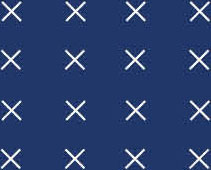
Our 7+ Years of Multifamily Marketing Expertise in Your Inbox. Weekly.
Why Strategy Lays Important Groundwork
It’s easy to espouse demographic information about a brand. For example, most Oreos purchasers are parents between the ages of 24 and 39. But what does that information mean? This explains a core distinction between digital marketing strategy vs. traditional marketing efforts.
For traditional marketing, this information is simple enough for Nabisco to put out a commercial during daytime hours for stay-at-home parents that heavily features children enjoying Oreos.
For digital marketing, the approach is more complex. From this demographic information, what do we know about these parents? Where do they spend their time online? What does their buyer’s journey look like? What is a deciding factor in their purchase?
As Oreo is an established brand with years of name recognition under its belt, it’s unlikely that it would have to consider these factors to find marketing success seriously. For other companies entering the world of digital marketing, this information is “make or break.”
Knowing the important factors of your digital multifamily marketing strategy is important in your first campaign and campaigns developed down the road. Not addressing this information upfront could lead to catastrophe, forcing marketers to return to step one.
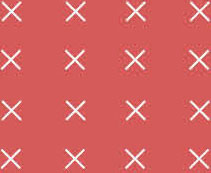
Stay Updated With New Multifamily Marketing Content
Multifamily Marketing By the Numbers
For multifamily marketers, content marketing can take time to show real results. That being said, it’s a long-term approach that improves your brand’s visibility online and helps you nurture stronger customer relationships.
While it can be difficult to assign a dollar value to marketing ROI or ROMI (Return on Marginal Investment), numbers are still important to the marketer, more focused on marketing and results than the value of the marketing.
Consider the following statistics to understand the value behind marketing beyond ROI further:
- Companies that blog 15 or more times per month see 5x more traffic than companies that don’t blog.
- 82% of businesses report actively using content marketing, up from 70% last year.
- Marketers with blogs receive 67% more leads than those who don’t.
- Marketers who prioritize blogs are 13x more likely to have a positive ROI.
- Video content is 50x more likely to drive web traffic than plain text.
- Using photos of real people rather than stock photography can result in a 35% conversion increase.
- Video was the primary form of marketing media created in 2021, followed by blogs (used by more than half of marketing teams), and infographics.
- Social engagement as a success metric was also on the rise, up 187% from 2020.
These statistics are developed from analyzing a widespread amount of marketing data and are incredibly important as marketers decide what tactics work well for their strategy. For example, knowing that blogging daily can have a large effect on the chances of customer acquisition is helpful. It may lead to a heavier blog focus in a group’s digital multifamily marketing strategy. But if persona research suggests that the key personas won’t read a blog, it might be wiser for the strategy to put less emphasis on blogging.
While marketing statistics don’t guarantee that a tactic will work for all marketers, they allow us to see important trends. Though innovation is important in multifamily marketing, it’s also vital that you’re not constantly seeking to reinvent the wheel. By utilizing trusted statistics, marketers can make educated decisions about the tactics to funnel their efforts.

How to Plan Your Next Inbound Campaign for More Renters

How Companies Are Rethinking the Value of Social Media
Social media reigns supreme in the marketing space, even above multifamily websites. Last year, a website was the No. 1 marketing channel for business. This year, social media is the top dog. In fact, it’s at an all-time high.
What does this mean for your multifamily organization? If you aren’t on social media in some capacity, you are already behind and missing out on qualified leads.
Did you know that 8 in 10 companies invested in social media marketing in 2021, and 39% plan to invest this year? Over the last year, companies had to rethink their strategies and some even hired customer experience officers to help lead the charge in this realm.

The Easiest Way to Determine Your Target Renter

But how do you measure success on social media? Engagement metrics are helpful to track, but how does that translate to conversions and social media ROI? The primary tactic for social media marketing in 2021 was listening — something that will continue into 2022 and beyond.
The true value of social media lies in the relationships you make. By establishing relationships with your followers, you can learn how to engage with them, support them, and — most importantly — convert them into sales and loyal brand advocates.
While the most popular platform for marketers is Instagram, many teams are starting to see the most social media ROI and conversions from Facebook. This is likely due to Facebook’s robust advertising platform and ability to run lead-form ads. While listening to social media is critical to your marketing strategy, you can still achieve social media ROI with lead-form ads and an effective Facebook advertising strategy.
Assigning Value to Your Marketing Efforts
Assigning value to marketing efforts doesn’t have to be solely numerical. Instead, it’s important for marketers to understand that marketing strategy offers an important starting point to all future endeavors. A digital multifamily marketing strategy also offers social media ROI that is not necessarily easily measured but impactful.

3 Keys to Multifamily Branding That Attracts Renters
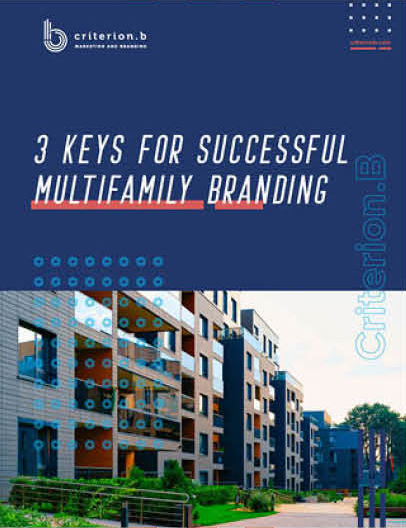
Despite the economic tribulations brought on the U.S. in the last few years, the real estate industry is hot. Aside from the increasing demand for more homes and commercial spaces, the multifamily industry is expected to grow remarkably up until 2030. So, how can you harness some of this data in your multifamily content marketing?
Let’s discuss …

A report from the National Multifamily Housing Council (NHMC) and the National Apartment Association (NAA) states that demand for multifamily real estate will be so great that at least 4.6 million units will be constructed within the next decade.
However, to make the most of these promising forecasts, multifamily real estate companies must learn to optimize data when creating multifamily content marketing.
Why Data Is Crucial in the Multifamily Industry
Data is crucial in every industry as it can improve conversion rates, increase traffic, and prevent knowledge gaps. To illustrate, a Bain & Company study states that businesses in the U.S. could increase profits by over $2 billion annually by utilizing data. Thus, data literacy is integral to professionals — including those who don’t work in the data analytics field.
In fact, today’s business degrees are becoming more interdisciplinary, covering topics like contemporary technologies and data methods. Modern online bachelor’s in business administration even have concentrations in data analytics and management information systems, which are taught alongside traditional business concepts, such as accounting, management, and business law. This shift only shows the growing expectations placed upon business people to be more data literate.
And this translates to the multifamily industry as harnessing data effectively can lead to more intimate understandings when it comes to trends, more accurate insights into future movements, and more effective multifamily content marketing creation.
How to Integrate Data Into Your Multifamily Content Marketing Strategy
1. Use data to drive contextual storytelling.
Good communication should paint a vivid picture, even if the topic is technical. After all, consumers need to understand the material for it to be impactful. However, multifamily marketing campaigns must also present information that audiences can relate to or find use in to have a lingering effect. This is where gathered data comes in. Using soft and hard data, you can create a well-rounded customer story that provides context, evidence, and insights. Thus, when crafting multifamily content marketing for your customer story, use data collaborations to maximize relevancy.
2. Leverage data visualizations.
Nothing hypes an exciting data set more than visuals. Though some data diehards may disagree, the truth is that visualizations make data more appealing and digestible. In fact, a study by iScribblers found that humans process visuals 60,000 times faster than plain text. Thus, should you have any pertinent data that needs sharing, explore doing so via infographics, interactive tables, or even videos.
Aside from being more immersive and interactive, data visualizations can increase recall value by upwards of 65%, making it a critical medium in data dissemination, externally and internally.

3. Only pick the most salient data points.
Although publishing every bit of data you gather may be tempting, the best way to share them is to circulate the most notable highlights in your multifamily content marketing. This benefits you two-fold. First, more succinct datasets allow you to retain an audience’s attention span (only eight seconds). And, second, shorter data — and content, in general — is more digitally compatible.
Considering that mobile compatibility and software development is credited by 59% of those in the multifamily industry for improving customer service, it’s also no surprise that there is now a demand for software programmers with a degree in computer science. However, whatever platform you use, your audience won’t be engaged if you present them with a hodgepodge of figures and statistics.
In line with this, data expert Dr. Stephanie Evergreen told Forbes that “cutting to the chase” with your findings is a better way to engage the 50% of audiences who view such content on their mobile devices.
Although experts agree that the real estate market’s long-term future remains unclear, the influence of multifamily content marketing and the power of data is undeniable. As multifamily businesses aim to adjust to the New Normal, data-enriched content can act as an anchor and a propeller for industry stability and profit.
Selena Perkins is a freelance digital marketer, with a keen interest in data analytics. She believes that knowing how to use data to make decisions is a must-have skill for everyone. When she’s not busy with work, Selena unwinds by watching shows on Netflix.

